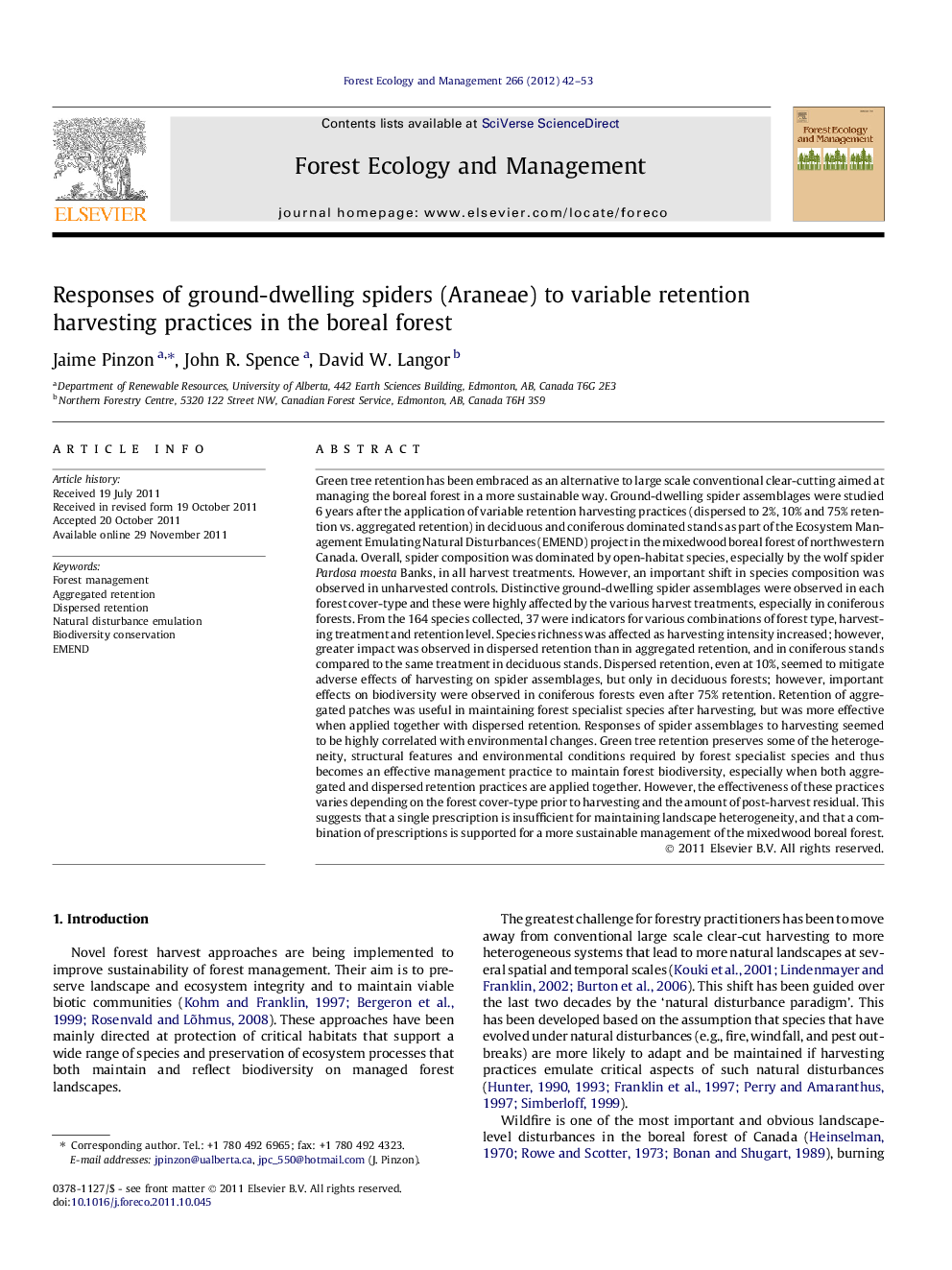| Article ID | Journal | Published Year | Pages | File Type |
|---|---|---|---|---|
| 87699 | Forest Ecology and Management | 2012 | 12 Pages |
Green tree retention has been embraced as an alternative to large scale conventional clear-cutting aimed at managing the boreal forest in a more sustainable way. Ground-dwelling spider assemblages were studied 6 years after the application of variable retention harvesting practices (dispersed to 2%, 10% and 75% retention vs. aggregated retention) in deciduous and coniferous dominated stands as part of the Ecosystem Management Emulating Natural Disturbances (EMEND) project in the mixedwood boreal forest of northwestern Canada. Overall, spider composition was dominated by open-habitat species, especially by the wolf spider Pardosa moesta Banks, in all harvest treatments. However, an important shift in species composition was observed in unharvested controls. Distinctive ground-dwelling spider assemblages were observed in each forest cover-type and these were highly affected by the various harvest treatments, especially in coniferous forests. From the 164 species collected, 37 were indicators for various combinations of forest type, harvesting treatment and retention level. Species richness was affected as harvesting intensity increased; however, greater impact was observed in dispersed retention than in aggregated retention, and in coniferous stands compared to the same treatment in deciduous stands. Dispersed retention, even at 10%, seemed to mitigate adverse effects of harvesting on spider assemblages, but only in deciduous forests; however, important effects on biodiversity were observed in coniferous forests even after 75% retention. Retention of aggregated patches was useful in maintaining forest specialist species after harvesting, but was more effective when applied together with dispersed retention. Responses of spider assemblages to harvesting seemed to be highly correlated with environmental changes. Green tree retention preserves some of the heterogeneity, structural features and environmental conditions required by forest specialist species and thus becomes an effective management practice to maintain forest biodiversity, especially when both aggregated and dispersed retention practices are applied together. However, the effectiveness of these practices varies depending on the forest cover-type prior to harvesting and the amount of post-harvest residual. This suggests that a single prescription is insufficient for maintaining landscape heterogeneity, and that a combination of prescriptions is supported for a more sustainable management of the mixedwood boreal forest.
► Forest harvesting has profound effects on biodiversity. ► Ground-dwelling spiders responded differently to dispersed and aggregated retention. ► Aggregated retention is effective for maintaining forest specialist species. ► Aggregated retention is more effective if applied together with dispersed retention. ► Responses to variable retention vary depending on forest cover-type prior to harvest.
